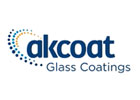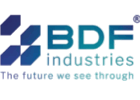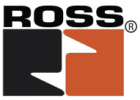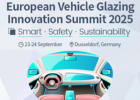The demand for pharmaceutical products is increasing worldwide, with more and more medications being launched onto the market in ever shorter periods of time. Last year alone, turnover in the German pharmaceutical market – the largest in Europe and the fourth largest worldwide – was around 53.6 billion euros. According to Statista, the volume has more than doubled in the last fifteen years and almost 100 billion counting units, i.e. tablets, sachets, injections, etc., were sold at last count. They all have to be packaged hygienically and safely, meeting strict legal requirements. This places high demands on packaging materials, filling processes and packaging machines.
At the latest since the pandemic, it has become clear how important protective packaging is for vaccines, medications, disinfectants and other medical products. We have seen from the example of the Corona vaccines that developing a vaccine is not enough. Numerous players along the entire supply chain had to work well together to protect millions of people from the virus. Billions of little glass vials for the vaccine were needed, as well as special cooling boxes for transport and special freezers for storage.
When the packaging world meets in Düsseldorf for interpack from 4 to 10 May 2023, it will also be about innovations in manufacturing, packaging and logistics of pharmaceutical products, including new solutions to the problem of product piracy. The pharmaceutical industry is affected by counterfeiting like no other. The lucrative business with counterfeit medications, which in the best-case scenario only contain less active ingredient, but can also be laced with unknown substances that are harmful to health, has picked up speed again with the growing online trade. The WHO estimates that more than half of the medications bought online from illegal websites are counterfeit. The estimated market value of counterfeit medications is around 75 billion US dollars per year.
Counterfeit protection through security features
In addition, global supply chains are becoming increasingly complex. Active ingredients are often produced in one country, processed and packaged in another and finally distributed and marketed across borders. The European legislator therefore took up the fight against counterfeit medications years ago with EU Directive 2011/62/EU. The directive, which comes into force in 2019, prescribes a number of safety features for prescription medications. For example, each package of pharmaceutical product must be labelled with a Unique Serial Code (USC) in combination with the article number (GTIN), the lot number (LOT), the expiry date (EXP) and the name of the manufacturer. All information is encoded in a 2D data matrix code, which is then printed in plain text on the packaging with a certain minimum print quality. In addition to the unique code, each package must carry tamper-evident features.
Companies such as interpack exhibitor Bluhm Systeme have been developing coding and labelling solutions for pharmaceutical packaging that comply with the EU directive for counterfeit-proof packaging for years. This includes various labelling solutions such as laser or inkjet coders, thermal transfer printers, labelling systems and the appropriate software. For example, the Integra One inkjet labeller developed for drug coding prints unique identification codes, barcodes or data matrix codes on a wide range of pharmaceutical packaging.
UV laser marking is also a proven labelling solution. Domino has introduced a new UV laser system in 2022 that is suitable for marking plastics as well as current sustainable packaging materials, including recyclable, flexible mono-material films. The system can be used to mark both white and coloured substrates without compromising the barrier properties of the material. Thanks to a photochemical reaction, the new marking laser does not rely on laser-activating pigments or additives or specially prepared coding fields.
Labels – more than just stickers
Anti-counterfeiting measures can also be security labels with first opening indication and integrated overt, covert and digital anti-counterfeiting features that irreversibly indicate a tampering attempt. Void seals, which leave visible effects when the label is first removed, are ideal for outer packaging. Various security features are often combined or supplemented with additional functions. In addition, digital labels with NFC technology and track & trace systems ensure the complete traceability of a pharmaceutical product.
Labels are an important component of pharmaceutical packaging and serve not only to protect against counterfeiting. Depending on the application on primary packaging such as bottles, blisters, syringes and vials or on secondary packaging such as folding boxes, they have to meet a wide variety of requirements: They carry general information, guarantee first-opening protection or can be partially detached to be pasted into patient records or vaccination cards. Multipage labels can also accommodate large amounts of information; they are often a combination of label and package insert. And for products that need to be refrigerated, temperature-resistant labels are needed to ensure good legibility during storage and transport.
Increasingly automated
As safety is paramount for pharmaceutical products, the requirements for packaging machines are also high. Machine manufacturer R.Weiss, for example, uses modular picker lines in which Delta robots pack products at top speed. For Siemens Healthineers, the company recently developed an intelligent UniRob turnkey system for packaging diagnostic products that automates the process of manually loading folding cartons. In the process, multipacks in different pack sizes are now also placed in environmentally friendly cardboard inlays, which replace the plastic previously used. A six-axis robot sucks the blanks from the magazine, unfolds them and inserts them into the carrier conveyor, which can be flexibly and fully automatically adapted to the respective formats.
Multivac has introduced a new carrier system in the Healthcare sector that ensures controlled, gentle product transport from pre-filled glass or plastic syringes to the packaging machine. For this purpose, the syringes are separated in an upstream process and placed in an oriented position in a workpiece carrier. At the packaging machine, a robot then takes them from the carriers and places them individually or pre-grouped into the packaging cavities. The packs are checked for completeness using a vision system from Multivac Marking & Inspection. Even at high throughput, it checks whether the individual products are correctly placed in the designated cavities. If they are not, the corresponding pack is automatically ejected.
The filling of liquid pharmaceuticals requires special know-how. Syntegon has developed the modular Versynta FFP (Flexible Filling Platform) for this purpose, an individually configurable machine especially for the aseptic filling of small batches. The new filling solution achieves output rates of up to 3,600 vials, syringes or cartridges per hour with simultaneous 100 percent in-process control. The platform includes several pharmaceutical handling units, each with a four-axis robot that moves the containers from one station to the next without glass-to-glass contact, thus reducing product loss.
Full-line supplier Romaco has also developed a new liquid filling line. Macofar E is a solution for the aseptic filling of injection fluids into vials. The technology fulfils all requirements of the EU GMP guidelines for the production of sterile pharmaceutical products. Romaco is also committed to more sustainable production and the reduction of CO2 emissions: Through innovative process control, for example, production times can be decisively shortened and thus energy and material can be saved in a targeted manner. In addition, all of the manufacturer's machines are available in a climate-neutral version and are equipped with energy monitors for sustainability reporting.
User-friendly software
Software solutions that collect data along the pharmaceutical supply chain also promise more security. With the Pexcite software platform from Uhlmann Pac-Systeme, users can collect, collate, display and analyse information from all areas of the production and packaging process and thus realise different tasks as required: Implementation of track & trace specifications along the entire process chain, monitoring of the productivity of machines and processes, digital tool management or centralised control and management of the entire production processes. The platform can be used across all digital devices in use, such as desktop devices, tablets and smartphones. "Visually appealing design, the light, friendly look and feel means above all complexity reduction for the users who use Pexcite. People have to enjoy working with our product and not be afraid of doing anything wrong or breaking anything", says Thomas Kreutle, Director Development & Operations Digital Solutions at Uhlmann Pac-Systeme. For this, the software platform received a Red Dot Award 2022.
Sustainable pharmaceutical packaging
The pharmaceutical industry is still reluctant to use recyclable materials. However, consumers today also expect more commitment to sustainability from this industry. Pharmaceutical packaging manufacturers are already one step ahead and have already developed numerous recyclable solutions for the primary and secondary packaging of medications. Last year, for example, the presentation of a recyclable paper blister caused a sensation and a recyclable monomaterial barrier tube in pharmaceutical quality was awarded a packaging award. Recently, a tubular film made from the bio-based polymer PLA was launched on the market that is industrially compostable and can be used as a sterile barrier system for diagnostic flow-pack applications.
In the area of primary packaging, i.e. where medications are packed directly, it will probably take some time before recyclable monomaterials become established. In contrast, experts already see a trend towards recyclable solutions in secondary packaging. Körber Pharma GmbH, for example, has developed secondary packaging made from grass paper as an alternative to packaging made from recycled paper and cardboard and was awarded the Pharmapack Sustainability Initiative Award 2022 for this. In the production of grass paper, half of the cellulose is replaced by grass fibres, using significantly less water and energy. The almost unlimited regional availability of grass shortens transport routes, saving almost 95 percent of CO2 emissions. Körber Pharma has already carried out test and development projects with several pharmaceutical companies for safe secondary packaging made of grass cardboard, which prove that the costs for the new packaging material are equivalent to those of conventional cardboard, while the material offers the same high level of product protection.
The trade fair interpack in Düsseldorf will show what other modern solutions the industry has in store. From 4 to 10 May 2023, trade fair visitors will be able to find out about innovative packaging and process developments for the pharmaceutical industry, especially in Halls 15 to 17. Further information on interpack is available at www.interpack.com .
























